Abstract
Sterilizable membrane probes were used to study the relation between oxygen concentration and respiration rate in Candida utilis growing on acetate. When the organism was grown in a continuous fermentor at various dissolved oxygen concentrations (0.23 × 10−6 to 32 × 10−6m), with time allowed for full adaptation to each oxygen concentration, the relationship between oxygen concentration and growth rate simulated Michaelis-Menten behavior, giving an apparent Km for oxygen of 1.3 × 10−6m. When respiration rate was measured at various oxygen concentrations without allowing time for adaptation, it was found that the respiration rate was directly proportional to O2 concentration at low O2 concentrations, and independent of O2 concentration at high O2 concentrations. Transition from one type of behavior to the other was fairly abrupt. The respiration rate in the presence of excess oxygen depended on the O2 concentration at which the cells were grown, but the rate at low O2 concentrations did not. There was evidence that, at low oxygen concentrations, oxygen diffusion through the cell substance limits respiration rate, at least in part.
Full text
PDF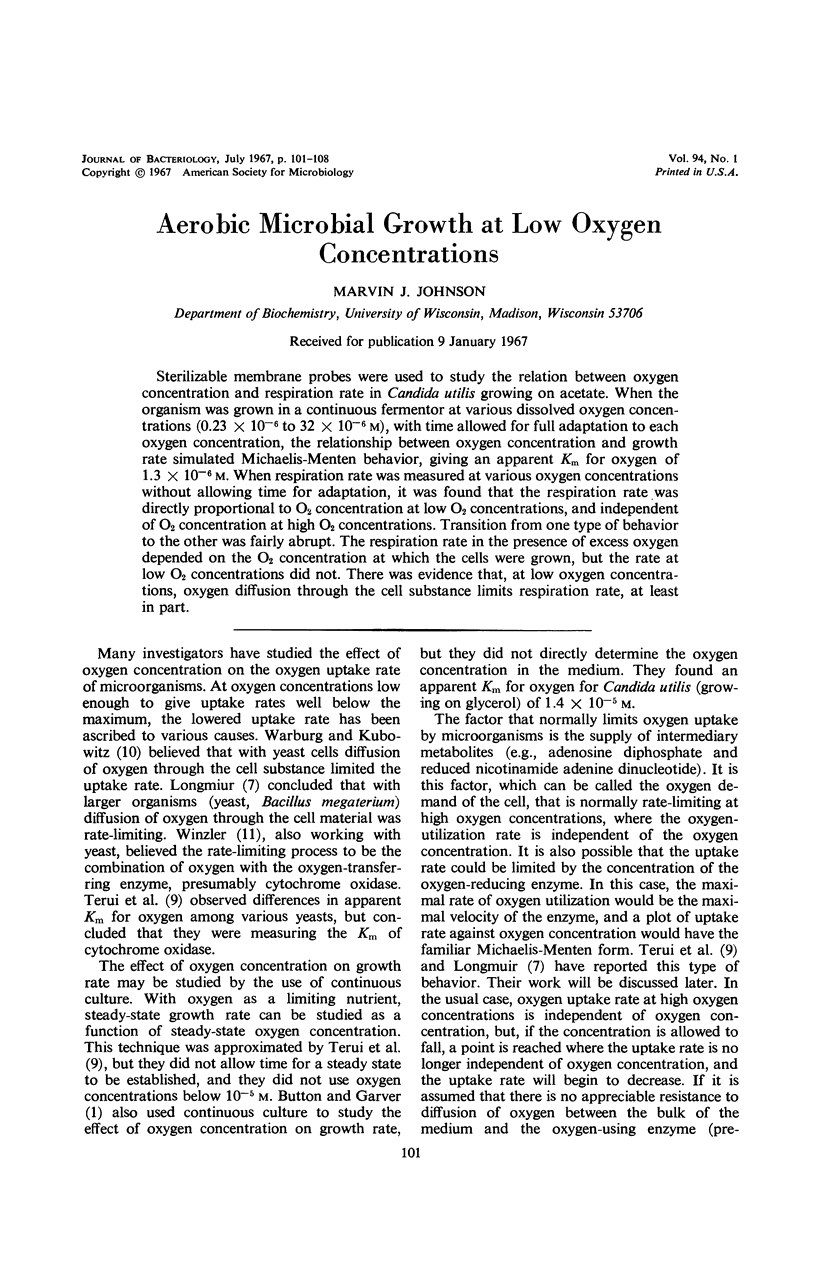
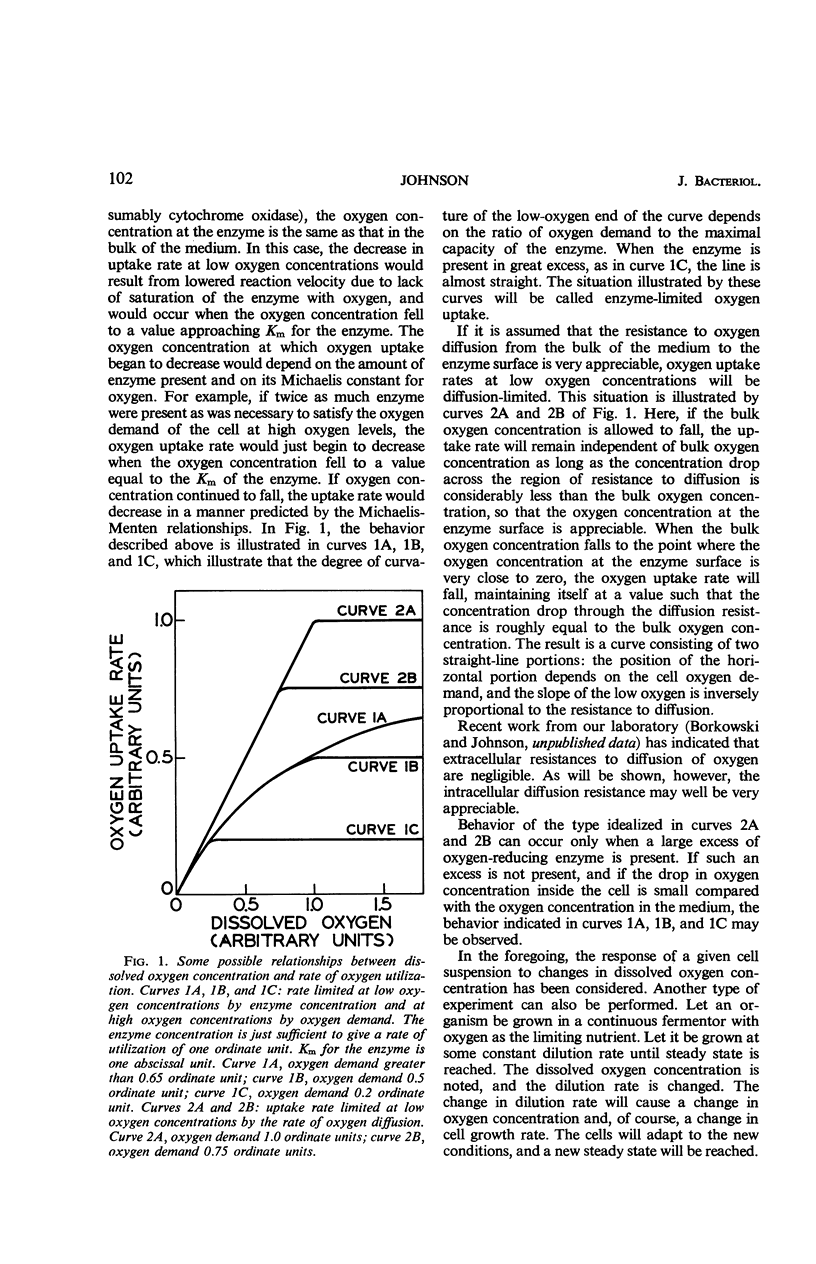
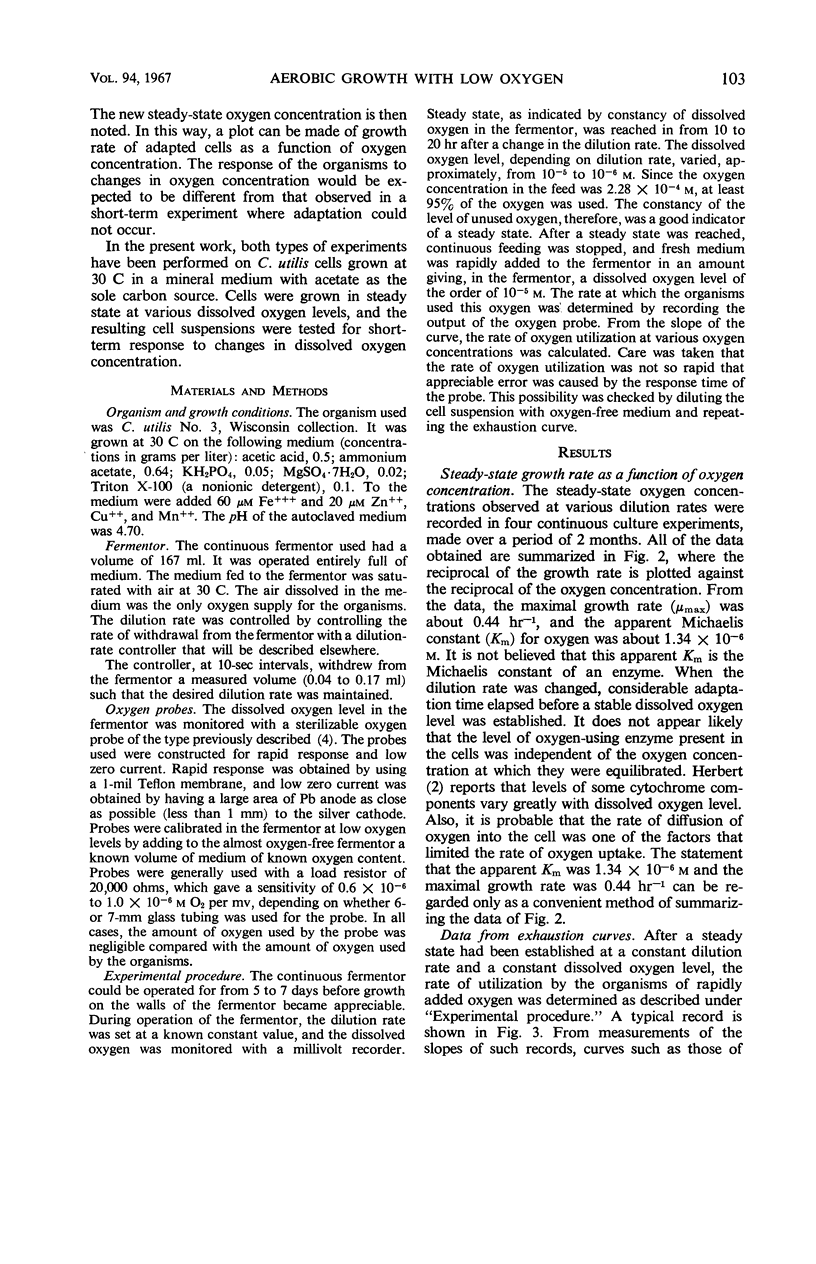
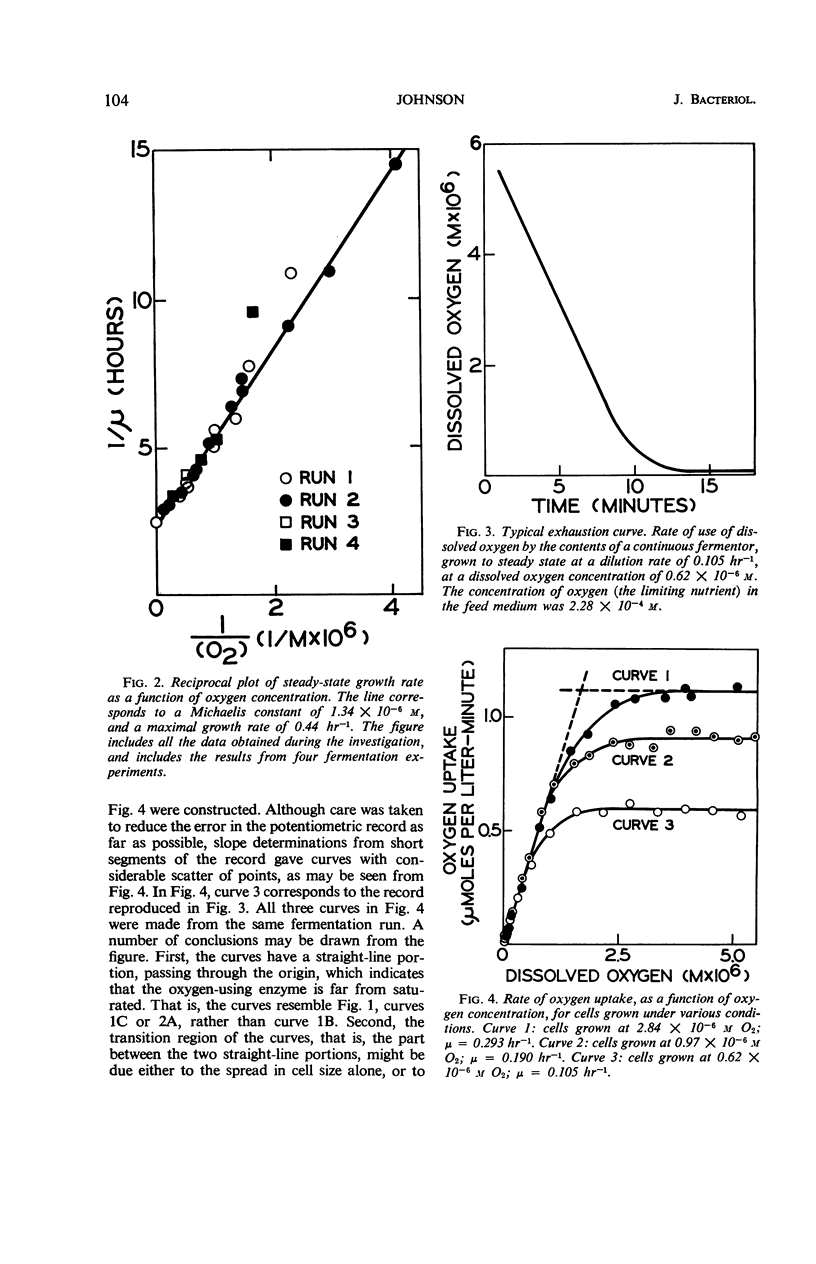
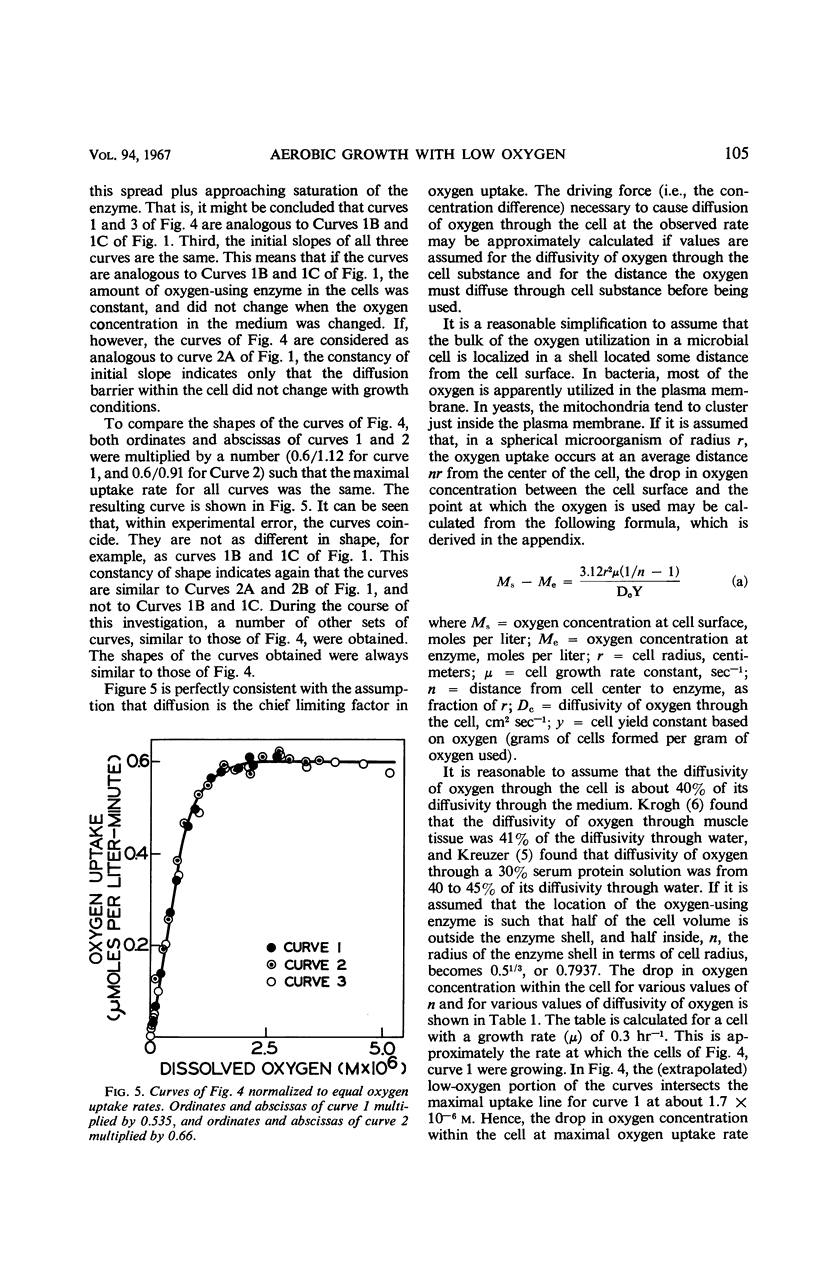
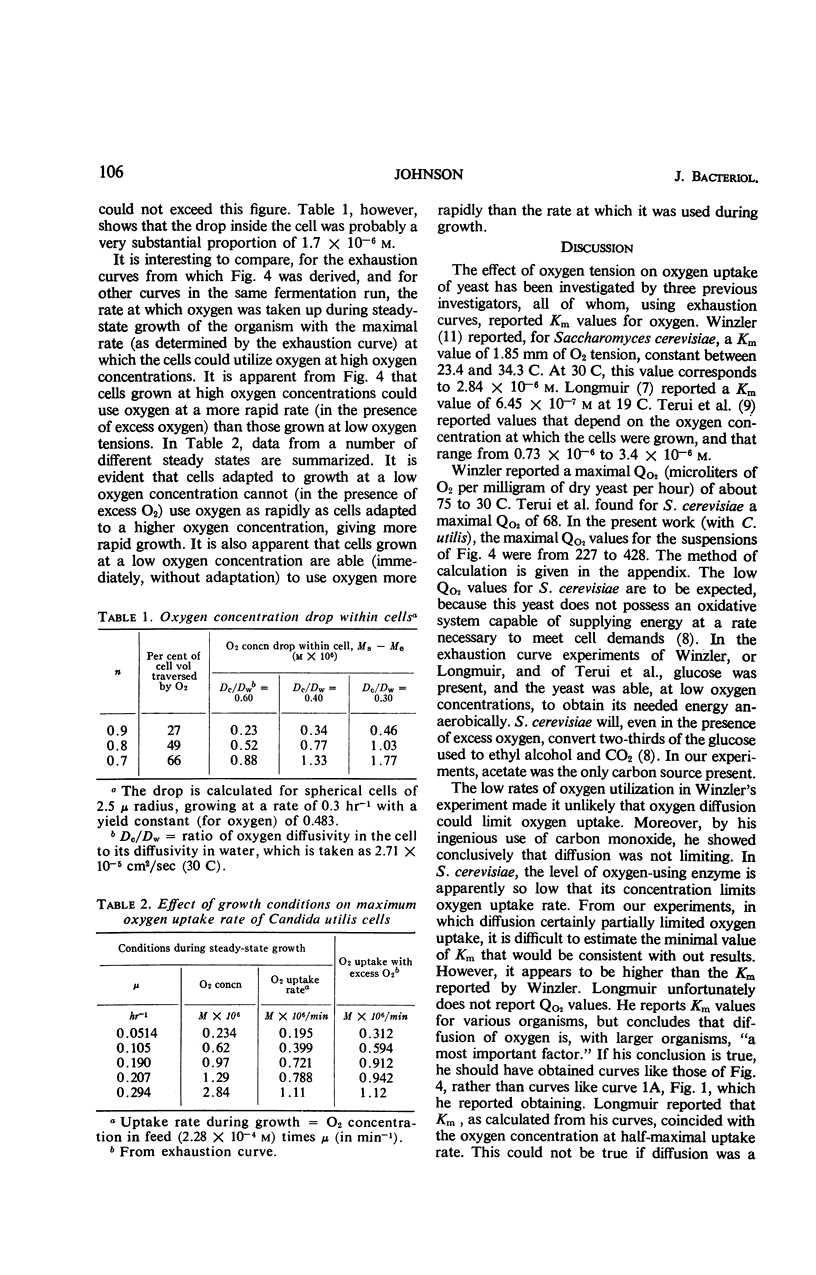
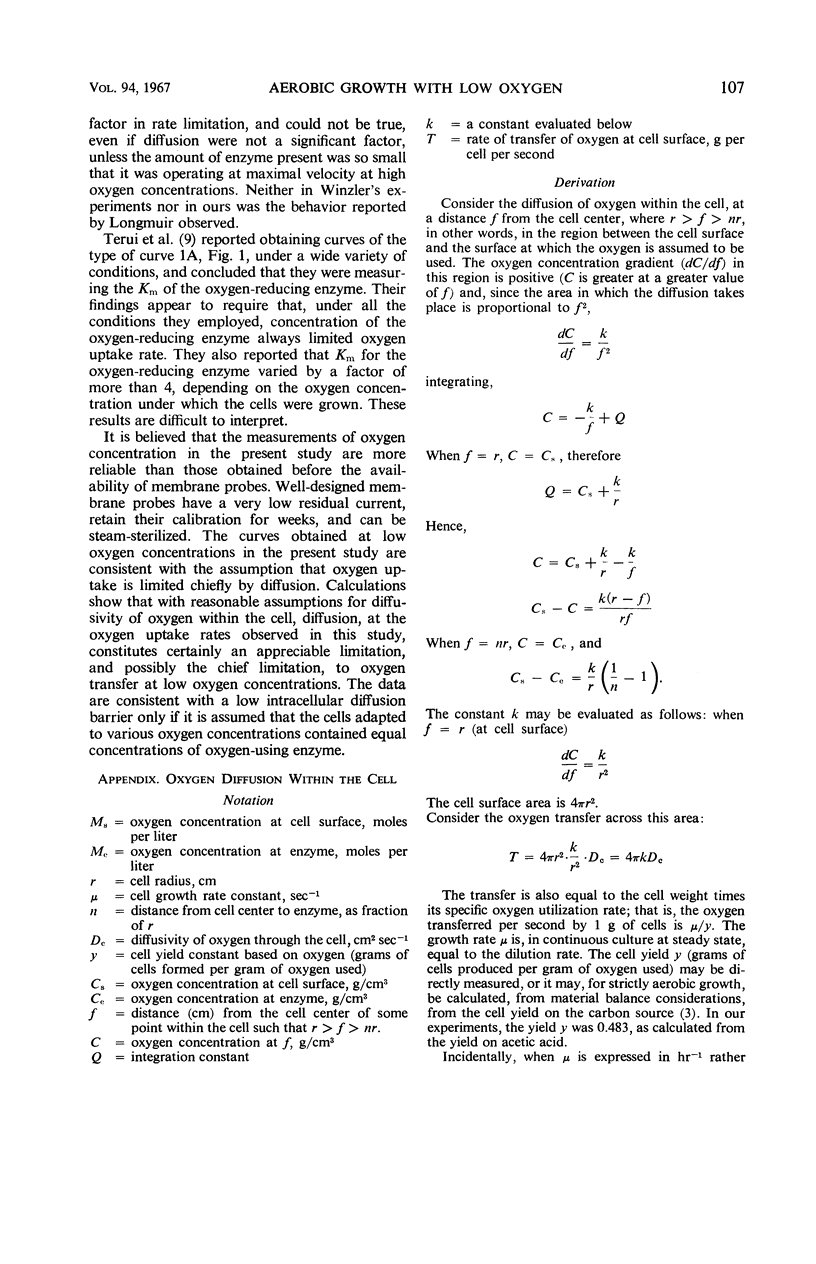
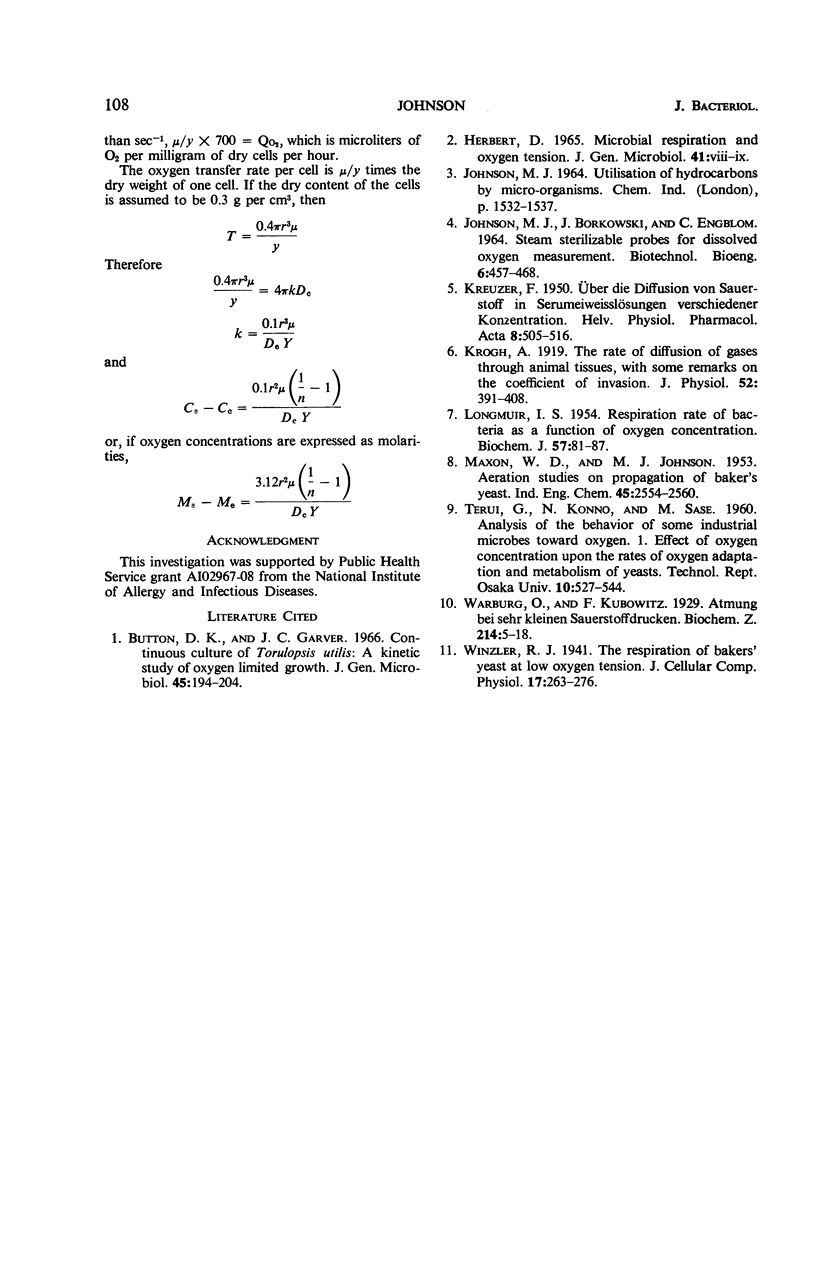
Selected References
These references are in PubMed. This may not be the complete list of references from this article.
- Button D. K., Garver J. C. Continuous culture of Torulopsis utilis: a kinetic study of oxygen limited growth. J Gen Microbiol. 1966 Nov;45(2):195–204. doi: 10.1099/00221287-45-2-195. [DOI] [PubMed] [Google Scholar]
- KREUZER F. Uber die Diffusion von Sauerstoff in Serumeiweisslosungen verschiedener Konzentration. Helv Physiol Pharmacol Acta. 1950;8(4):505–516. [PubMed] [Google Scholar]
- Krogh A. The rate of diffusion of gases through animal tissues, with some remarks on the coefficient of invasion. J Physiol. 1919 May 20;52(6):391–408. doi: 10.1113/jphysiol.1919.sp001838. [DOI] [PMC free article] [PubMed] [Google Scholar]
- LONGMUIR I. S. Respiration rate of bacteria as a function of oxygen concentration. Biochem J. 1954 May;57(1):81–87. doi: 10.1042/bj0570081. [DOI] [PMC free article] [PubMed] [Google Scholar]


